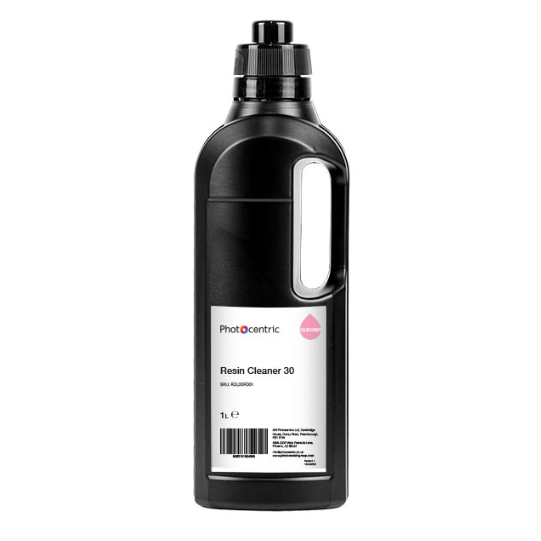DIGITAL MANUFACTURING - WEEK FOUR: AM PROCESS EVALUATION
Author: Callum Baxter Date: 22/02/2023 Topic: Digital Design and Manufacture
INTRODUCTION
During the fourth teaching week we investigated the importance of process simulation and digital twinning when planning for mass-manufacture. We started learning Siemens Plant Simulation software (Technomatix) to model a digital twin of the Festo Cyber-Physical Lab and learnt about mitigating bottlenecks and optimising production. Siemens Technomatix will be explored in further detail in a future blog post once I have had time to learn it’s features thoroughly.
This week’s blog post will instead focus on selecting an appropriate additive manufacturing technology to meet the mass-manufacturing specifications in the brief. A range of additive manufacturing processes were analysed, taking into consideration features such as duration, material cost and batch size. A weighted decision matrix was then used to determine which technology to use for the mass-manufacture of 50,000 phone cases.
Printer Setup
The images below show the print setups for each of the analysed printers. Information such as material usage, duration, material types, and batch size are shown. It was important to assess a wide range of additive manufacturing technologies to developing a high quality and cost effective production process.
Information about the HP 580 MJ printer was limited due to restricted access to HP’s proprietary 3D slicing software.
Weighted Decision Matrix
The manufacturing data required to generate a weighted decision matrix was gathered together for easy reference (Table 1). The manufacturing data was taken from printer data sheets (found in the appendix below) and estimations provided by slicing software (Fig.1-7).
After gathering the manufacturing data, a list of important criteria was generated and ordered in a weighted hierarchy (Table 2). Scores were then assigned to each printing technology based on the statistics in Table 1. As you can see in the tables below, the Liquid Crystal Magna was identified as the most suitable additive manufacturing technology to meet the requirements of the assignment brief.
Table 1: Additive Manufacturing Information Table
Table 2: Weighted Decision Matrix
Photocentric Additive Manufacturing Ecosystem
Because the Liquid Crystal Magna was chosen to fulfil the assignment brief it was important to assess the other products that Photocentric supplies and recommends to enhance the production capabilities of the L-C Magna. Below is a comprehensive list of the technologies supplied or recommended by Photocentric that support their additive manufacturing workflow.
CONCLUSION
The process of analysing Print City’s additive manufacturing technologies allowed me to identify the Liquid-Crystal Magna as the best printer to fulfil the annual production of 50,000 phone cases. It was interesting to compare the features, advantages and disadvantages of each additive manufacturing technology and discover the process that would meet the brief specifications and perform best within a mass-manufacture context. It was surprising to me how well the Ultimaker S5 performed when compared to other additive manufacturing technologies within the decision matrix. However, its low-quality surface finish, small batch size, constant need for material replacement and long manufacturing time means I cannot recommend it as a mass-manufacturing solution. I think the results within the matrix were skewed because each printer has a different batch size. For example, it would require three Ultimaker Printers to match the output of one Liquid Crystal Magna printer and both these options would cost the same. The use of more printers would increase maintenance costs, process risks and operator workload. From my experience, Ultimaker printers also have a higher failure rate when compared to the L-C Magna, meaning more material wastage and less efficient production.
APPENDIX: Printer Datasheets
Below are a collection of printer datasheets published by their respective manufacturers that I used as reference when assessing print technologies.
REFRENCES
FormLabs. (no date) Fuse 1 Technology and Workflow Overview. FormLabs. [Online] [22/02/2023] -ENUS-P-Fuse-1-Technology-and-Workflow-Overview.pdf (google.com)
FormLabs. (no date) Form 3L - Perfectionism That Scales. FormLabs. [Online] [22/02/2023] formlabs-form-2-sla-3d-printer.pdf (google.com)
Hewlett Packard. (no date) HP Jet Fusion 580 Colour 3D Printer. Hewlett-Packard. [Online] [22/02/2023] 5ef5f3d5d8ea4.pdf (google.com)
Markforged. (2022) X3 (Gen 2) Product Specifications. Markforged. [Online] [22/02/2023] F-PR-3014.pdf (google.com)
Photocentric. (no date) Bofa Fume Extractor. [Online image] [22/02/2023] 3D Printing Post Processing - Photocentric 3D Printing, Cure, Wash Units (photocentricgroup.com)
Photocentric. (2019) LC Magna User Manual. Photocentric. [Online] [22/02/2023] Liquid-Crystal-Magna-Instructions-06-21.pdf (google.com)
Photocentric. (no date) Photocentric Air Wash L. [Online image] [22/02/2023] 3D Printing Post Processing - Photocentric 3D Printing, Cure, Wash Units (photocentricgroup.com)
Photocentric. (no date) Photocentric Resin Cleaner 30. [Online image] [22/02/2023] Photocentric Resin Cleaner 30 - Photocentric Post Processing, 3D Printing (photocentricgroup.com)
Photocentric. (no date) Photocentric Cure M+. [Online image] [22/02/2023] 3D Printing Post Processing - Photocentric 3D Printing, Cure, Wash Units (photocentricgroup.com)
Photocentric. (no date) Photocentric Cure L2. [Online image] [22/02/2023] 3D Printing Post Processing - Photocentric 3D Printing, Cure, Wash Units (photocentricgroup.com)
Photocentric. (no date) Photocentric Wash 15. [Online image] [22/02/2023] 3D Printing Post Processing - Photocentric 3D Printing, Cure, Wash Units (photocentricgroup.com)
UltiMaker. (2019) Ultimaker S3 Product Data Sheet. UltiMaker. [Online] [22/02/2023] ultimaker-s3-product-data-sheet-en-trideus.pdf (google.com)
UltiMaker. (no date) Ultimaker S5 Specification Sheet. UltiMaker. [Online] [22/02/2023] A700000006509368.pdf (google.com)














